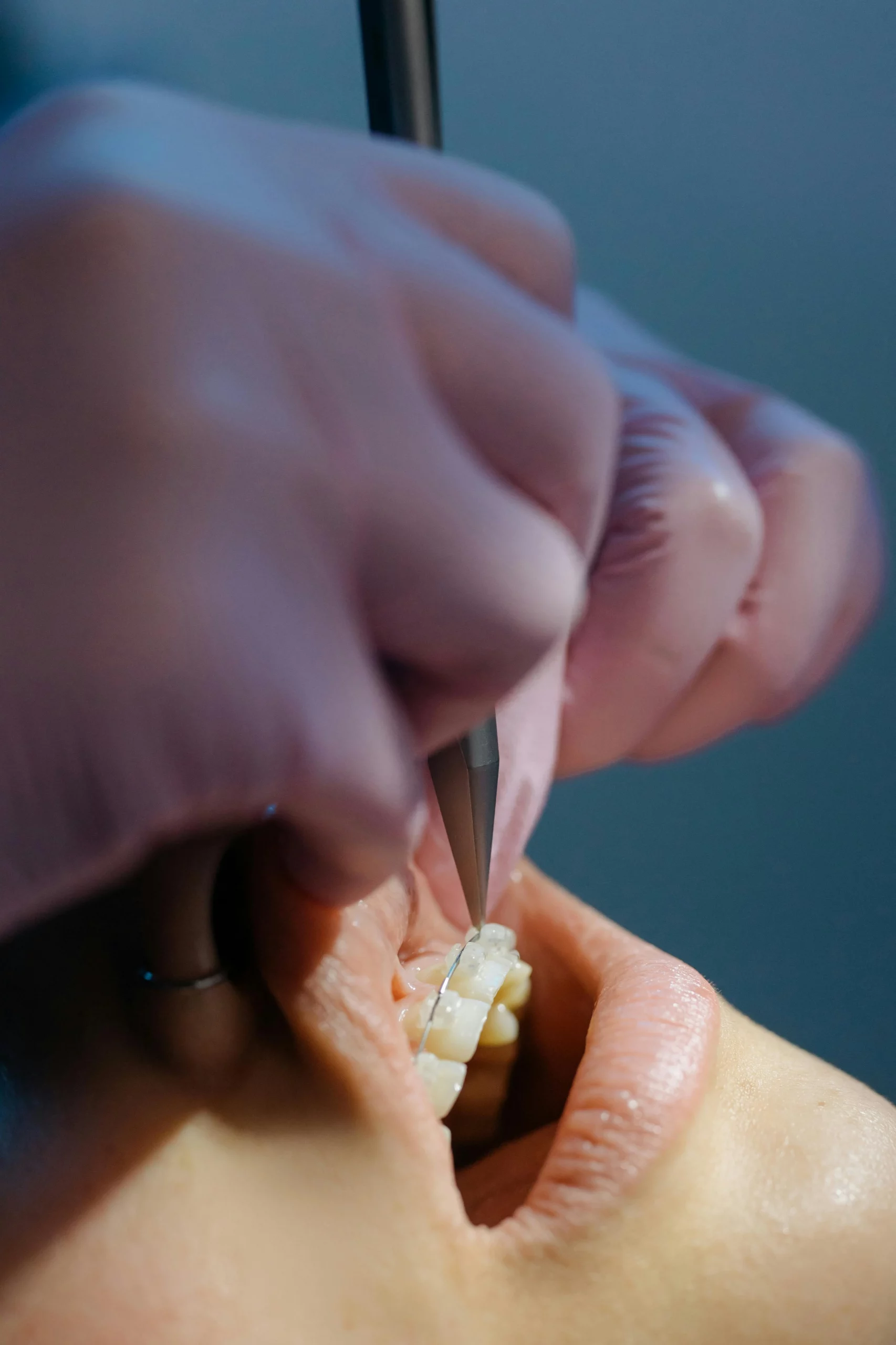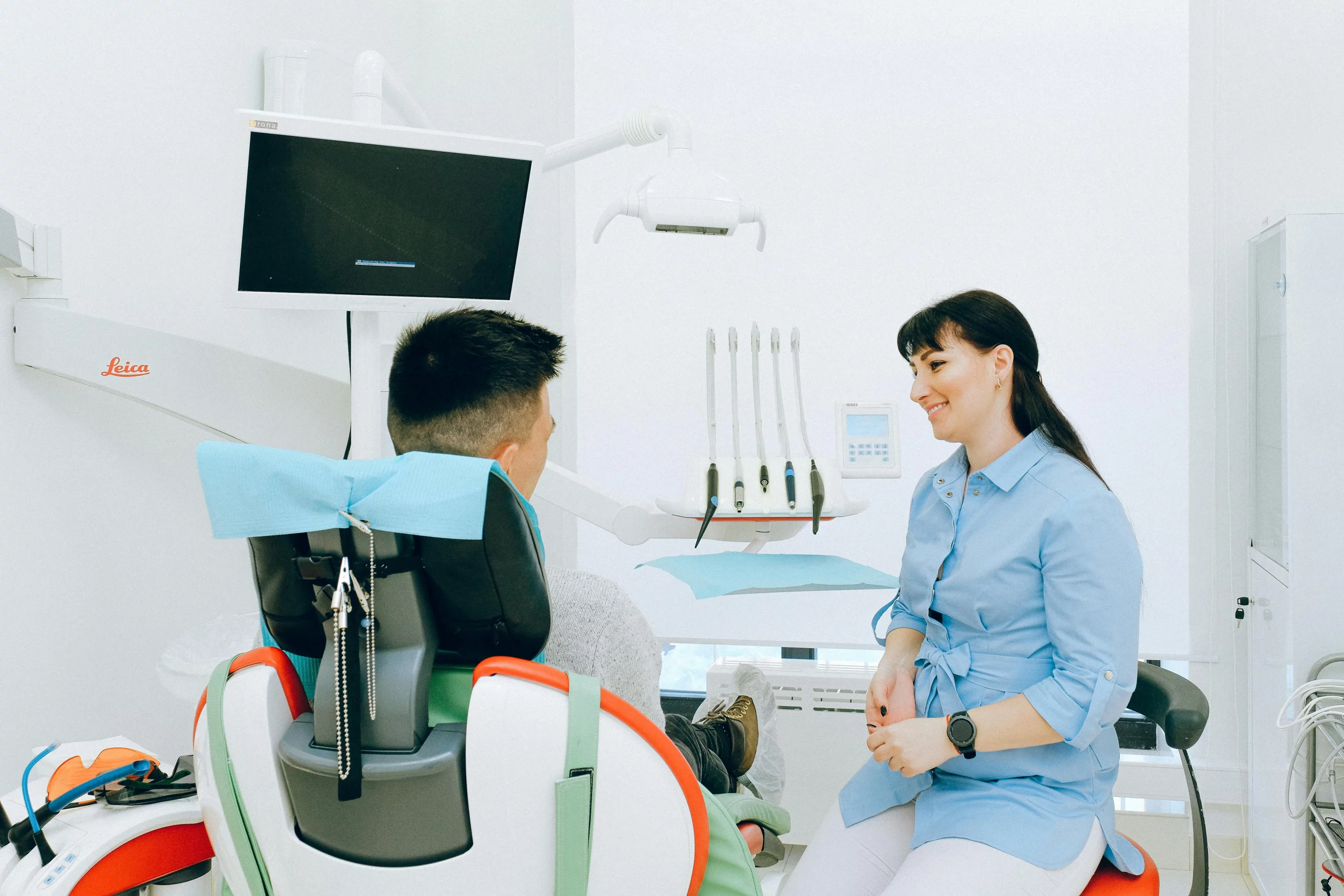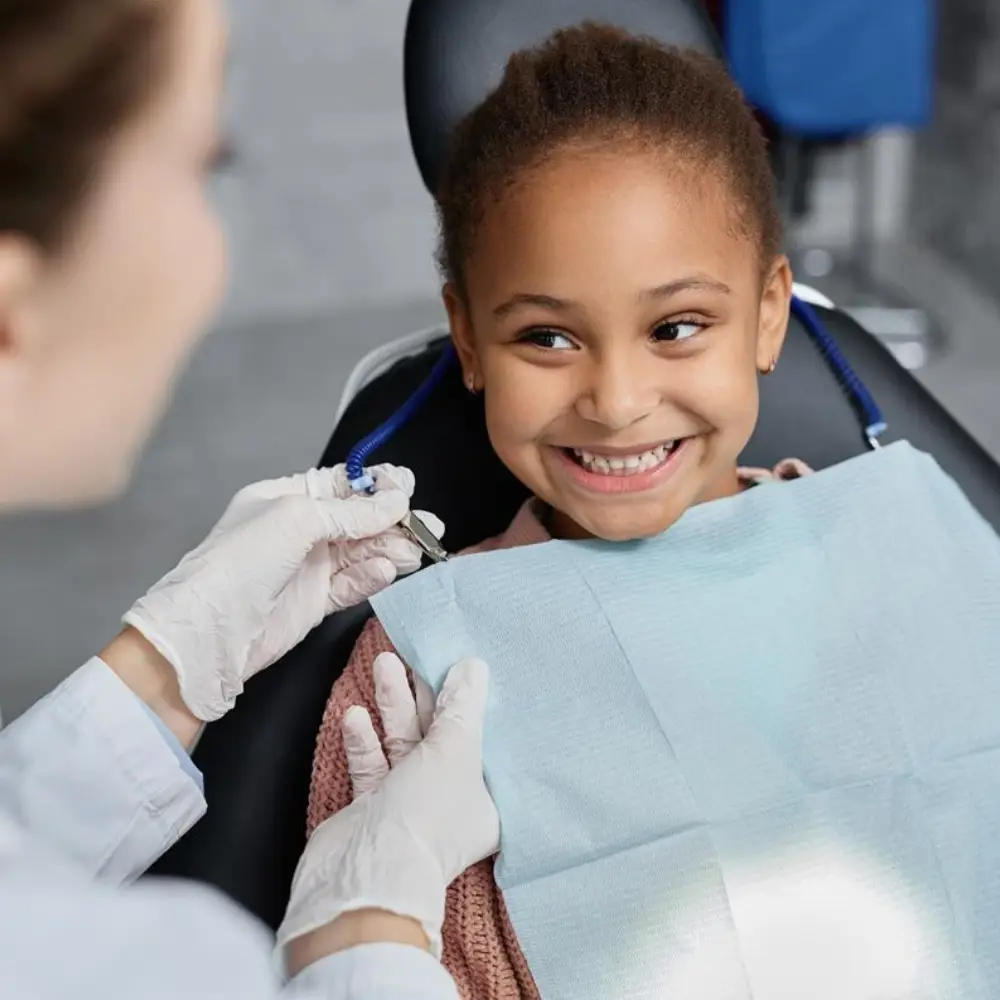The removal of braces marks a significant milestoneon, e defined by a sense of achievement, relief, and excitement. But as the braces come off, a new responsibility begins: wearing a retainer. While it’s easy to focus on your beautifully straightened teeth, what many don’t realize is that the retainer is just as important as the braces themselves. Without it, your teeth can slowly shift back to their original positions, undoing all the time, effort, and investment you put into your smile.
Post-orthodontic care is not just a recommendation, it’s a necessity. The retainer acts as a guide, holding your teeth in their new positions while your gums, bones, and surrounding tissues stabilize. Even though it might feel like just another dental device, its role in maintaining proper alignment is crucial for long-term success.
In this blog, we’ll break down everything you need to know about retainers: why they matter, how long you need to wear them, what types are available, and how GP Dental is here to support you through every step of this final (but essential) phase of your orthodontic journey. Whether you’re newly braces-free or looking for retainer care tips, you’re in the right place to protect your smile for life.
What Are Orthodontic Retainers and Why Are They Important?
After the removal of orthodontic appliances, whether traditional braces or clear aligners, it is imperative to utilize a retainer to maintain the teeth’s new positions. Without this crucial step, teeth often exhibit a tendency to revert to their original alignment, a phenomenon commonly observed post-treatment.
Immediately following the removal of braces, teeth are particularly unstable. The surrounding bone and gum tissues require a period of adjustment to accommodate the new positioning. During this transitional phase, it serves as a stabilizing device, effectively preventing undesired movement.
Furthermore, the use of a it is not solely for aesthetic preservation. Considerable time and financial investment are typically involved in orthodontic treatment. Neglecting to wear it can jeopardize this investment, frequently resulting in the need for additional corrective procedures. This outcome is rarely desirable from either a practical or financial standpoint.
The Role of Retainers in Maintaining Treatment Results

Teeth display a notable tendency to shift position over time, regardless of the effort invested in orthodontic alignment. Even after prolonged corrective measures, dental drift can occur due to factors such as mastication, aging, or merely the passage of time. This continual propensity for movement underscores the importance of retainers, which function much like vigilant custodians, maintaining dental alignment and preserving the results achieved through orthodontic intervention.
While social media aesthetics often receive attention, dental misalignment encompasses far more than appearance. Malocclusion can negatively impact jaw function, contribute to abnormal tooth wear, and even influence speech articulation. Retainers are there to keep the chaos at bay, plain and simple.
Types of Retainers: Fixed vs. Removable Options
Alright, so retainers, basically, you’ve got two main squads here:
| Fixed Retainers | Removable Retainers |
| These are thin wires bonded to the back of your teeth. They’re not visible and provide constant support. Since you can’t remove them, they offer consistent protection—but they require diligent cleaning. | Hawley – Made of metal wires and acrylic, they’re durable and adjustable. Clear – Made of transparent plastic, they’re discreet and popular for aesthetics. |
Each treatment option presents distinct advantages and challenges; there is no universal solution. The orthodontist serves as a specialized advisor, guiding patients toward interventions that best suit their individual needs and lifestyles, aiming to maximize both efficacy and comfort throughout the process.
How Long Should You Wear a Retainer After Braces?

You’ve reached the end of your orthodontic treatment, braces off, teeth all straightened out. It’s a big milestone, no doubt. Yet before you disregard it as an unnecessary afterthought, there’s an important fact to consider: retention is a crucial phase in orthodontics, not a mere suggestion.
Many patients are surprised to discover that removing braces does not signal the conclusion of treatment. Teeth, by their very nature, possess a tendency to revert to their previous positions, particularly in the months immediately following active correction. Retainers, therefore, are not simply supplementary devices; they serve as vital instruments that help maintain the stability of your new dental alignment.
How long should one wear a retainer after braces? Is it a temporary measure, several months, perhaps a year, or is it a long-term, possibly lifelong, commitment? The answer varies depending on individual circumstances, but orthodontists generally advocate for consistent retainer use to preserve results over the long term.
This article will address several key points:
- The rationale behind it use following orthodontic treatment
- Types of retainers and their respective mechanisms
- Recommended durations for retainer wear, based on current best practices
- Strategies to incorporate retainer use into daily routines
- The potential consequences of inconsistent or inadequate retainer wear
Through examining these areas, you’ll gain a comprehensive understanding of what to expect after braces—and how to ensure your improved smile endures for years to come.
Understanding the Retention Phase: A Critical Period
Congratulations on completing your orthodontic treatment and transitioning away from braces. Now, you enter what’s known as the “retention phase,” a critical period for maintaining your dental alignment. Teeth are particularly prone to shifting immediately after braces are removed, so continued diligence is essential.
During the initial phase, you’ll be expected to wear it nearly constantly, essentially all day and night, except while eating, brushing your teeth, or in situations where removal is appropriate. Over time, and at the discretion of your orthodontist, you may be allowed to reduce wear to nighttime only. It is important not to become complacent. Consistent use is necessary to prevent your teeth from reverting to their previous positions, which could result in the need for further orthodontic intervention.
How It Helps Prevent Teeth Shifting
Consider the state of your gums and bones following orthodontic treatment, essentially, they remain malleable and susceptible to shifting. This is precisely the role it fulfill; they act as stabilizing agents, maintaining dental alignment while the supporting structures adapt and strengthen.
Neglecting to wear your retainer is analogous to omitting a protective finish after painting a wall. The initial result may appear satisfactory, but without reinforcement, the integrity of the work is compromised over time. In other words, consistent use is imperative for long-term orthodontic success.
Common Problems with Retainers and How to Solve Them
Retainers, despite their clinical effectiveness, can present a series of practical challenges for patients post-orthodontic treatment. Even with advanced design, discomfort remains a common complaint; many individuals experience persistent pressure or minor pain, particularly upon initial insertion at night. Misplacement is also widespread, retainers are frequently lost or accidentally damaged, often by being stepped on or discarded with a napkin. Such incidents not only cause inconvenience but may also jeopardize treatment outcomes.
Other frequent issues include altered speech, increased salivation, and concerns about oral hygiene. Retainers, if not cleaned thoroughly, can develop unpleasant odors or accumulate bacterial buildup, potentially affecting oral health. Additionally, improper fit over time may signal changes in dental alignment or wear of the it. To address these concerns, this section systematically examines the most prevalent retainer-related difficulties encountered after braces. More importantly, it outlines evidence-based strategies for optimizing retainer care and usage. By adhering to recommended practices whether managing fit, preventing odor, or ensuring timely replacement, patients can mitigate complications and preserve the results achieved through orthodontic intervention.
In summary, understanding the typical obstacles associated with retainer wear, and implementing targeted solutions, is essential for long-term dental stability and patient well-being.
Discomfort, Breakage, and Fitting Issues
The experience of adjusting to a new retainer is, frankly, quite challenging. It can almost feel as if one’s teeth are being compelled to revert to their earlier alignment evoking memories of adolescence. Typically, any discomfort or unusual pressure tends to subside within a day or two, provided it is worn consistently.
On another note, should you observe any damage such as a crack or if it no longer fits properly, it is inadvisable to attempt personal repairs (for example, using household adhesives, which are not suited for dental appliances). Instead, it is most prudent to contact your dentist promptly. Doing so ensures your teeth remain properly aligned and prevents avoidable complications.
Cleaning and Maintenance Tips for Longevity
Retainers, despite their somewhat unassuming presence, require consistent and proper maintenance—neglecting their care can quickly result in undesirable bacterial buildup. The recommended approach is straightforward: employ a soft-bristled toothbrush alongside lukewarm water for routine cleaning. It’s important to avoid hot water, as exposure can lead to warping or distortion of retainer material. Abrasive toothpastes and harsh chemical agents should also be avoided, as these can compromise the clarity and integrity of clear retainers. When not in use, retainers ought to be stored securely in their designated protective cases rather than left exposed to environmental contaminants.
For individuals with fixed retainers, the use of floss threaders and interdental brushes is strongly advised; while the process may be somewhat cumbersome, such diligence is necessary to prevent the accumulation of plaque and tartar around the appliance. Ultimately, maintaining appropriate retainer hygiene supports both oral health and continued orthodontic success, while minimizing the likelihood of negative outcomes such as unpleasant odors or additional clinical interventions.
Why GP Dental Is the Best Place for Your Retainer Needs

The removal of orthodontic braces represents merely the initial phase in the journey toward sustained dental alignment. At GP Dental, our commitment extends well beyond the conclusion of active orthodontic treatment. We provide ongoing support to ensure that the achieved results are maintained, recognizing the importance of post-treatment care in preserving long-term oral health and the integrity of your smile.
Customized Retainers for Perfect Fit and Comfort
The reliance on traditional dental molds, often associated with discomfort and imprecision, has been superseded by advancements in digital imaging technology. Contemporary retainers are fabricated using precise digital scans, ensuring a custom fit tailored specifically to each patient’s unique dental structure. This modern approach eliminates the discomfort historically linked to generic molds and enhances the effectiveness of the retainer. Patients may elect to retain the classic Hawley design, which remains a viable option, or opt for more inconspicuous, clear alternatives. In summary, the evolution of retainer fabrication reflects a broader commitment to individualized dental care, whereby the uniqueness of each patient’s dentition is both acknowledged and accommodated.
Follow-Up Appointments to Ensure Long-Term Success
Let’s be frank, teeth exhibit unpredictable tendencies. At one moment, your retainer fits seamlessly; soon after, it seems to have shifted, undermining its intended function. This is precisely why routine evaluations are essential, ensuring dental alignment remains stable over time. Should your retainer become ineffective or present unexpected challenges, prompt intervention will address the issue efficiently.
GP Dental’s commitment extends beyond initial orthodontic outcomes. Rather than providing a temporary solution, we prioritize sustained support, aiming to preserve optimal dental aesthetics and functionality for years to come.
Frequently Asked Questions (FAQs)
1. How often should I replace my retainer?
The longevity of a dental retainer largely hinges on both the type of retainer and the manner in which it is maintained. Clear plastic retainers generally last anywhere from one to three years, provided they are not subjected to undue stress, such as excessive biting or exposure to heat. In contrast, Hawley retainers, which are more robust, often endure for a significantly longer period—comparable, perhaps, to long-lasting household appliances. Nonetheless, when a retainer exhibits signs of damage, such as cracking, distortion, or improper fit, it is essential to seek a replacement to ensure continued oral health.
2. What happens if I stop wearing my retainer?
Your teeth have a natural tendency to move, especially right after your braces come off. Without the gentle pressure of a retainer, they can start shifting back toward their original positions, sometimes faster than you’d expect. Even taking a short break from wearing your retainer, like a few nights or a week, can lead to noticeable changes in alignment. This is why consistent wear is so important, particularly in the first year after braces. The longer you skip it, the harder it may be to get your teeth back in line.
3. Can I get a new retainer if I lost mine?
Yes! Contact GP Dental as soon as possible. If you’ve lost, broken, or damaged your retainer, don’t wait, reach out right away. The sooner we can create a replacement, the better chance we have of keeping your teeth from shifting out of alignment. Even a small delay can lead to movement that might undo some of your hard-earned progress. At GP Dental, we’re here to help you stay on track and protect your beautiful smile for the long run.
4. Is it normal for my retainer to feel tight sometimes?
Yes, especially if you haven’t been wearing it consistently. If your retainer suddenly feels tight or uncomfortable, it’s likely a sign that your teeth have started to shift. This can happen surprisingly quickly even after just a few days without wearing it. While a little pressure is normal when reinserting your retainer, ongoing discomfort means your smile is already on the move. Don’t ignore the warning signs, wear it as directed and reach out to GP Dental if it no longer fits properly.
5. Can I clean my it with mouthwash?
It’s not recommended, especially for clear plastic retainers. While it might seem like a quick way to freshen them up, using mouthwash can actually do more harm than good. Most mouthwashes contain alcohol, which can dry out and warp the plastic, causing your retainer to lose its shape or become cloudy. Instead, stick to lukewarm water and a gentle cleanser specifically designed for retainers or dentures. This helps keep your retainer clean and clear without compromising its fit or durability.


